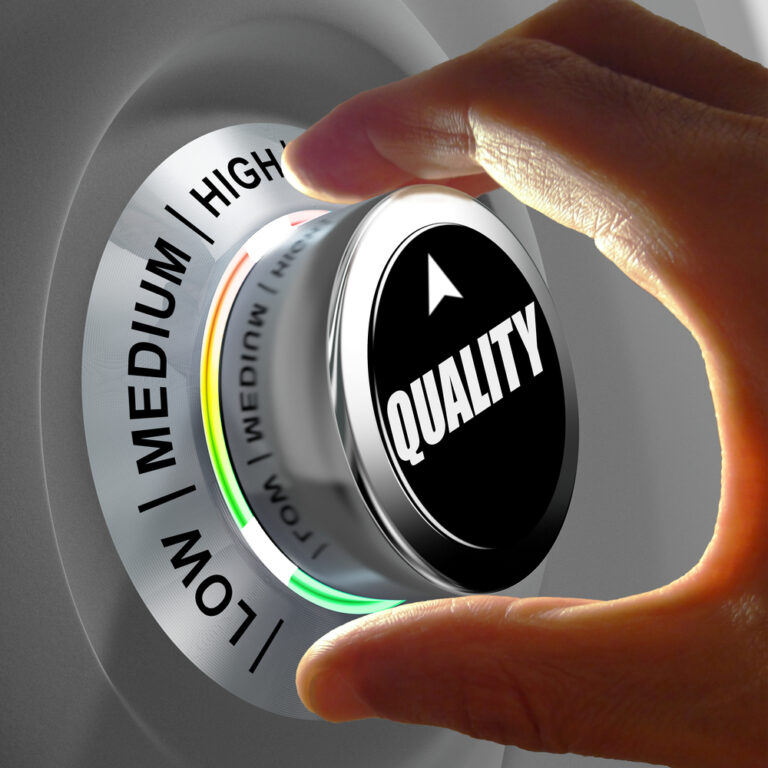
“In an environment where brands and fashion retailers are cornered by customers’ demand to constantly drop prices, by sudden shifts in customers’ preferences and by the pressure to create more and more options – alternative designs – companies in the sector have an obligation to manufacture products quickly, send them to their stores in the same way and, at the same time, achieve the goal of improving communication with consumers. Thus begins the detailed report The State of Quality Inspections in the Global Supply Chain: 2018 Edition By Sourcing Journal & Inspectorio which analyzed the universe of quality of clothing, footwear and fashion accessories and the inspection process and how they are affected by the current dynamics of retail.
The quality of fashion
In the survey that originates this comprehensive report, one of the sector’s professionals said that as the industry becomes more and more committed to speed, the end result is a failure for both the brand and the customer in terms of quality. Low cost, fast fashion and even ultra fast fashion, have been creating a lower quality standard and consumers perceive it. Purchasing becomes frustrating when the customer notices that the fabrics are extremely cheap, of poor quality, and the sewing and manufacturing processes are defective. The overall quality of fashionable clothing and footwear has declined steadily over the last decade.
Sean Cormier, assistant professor and director of the Department of Textile Development and Marketing at the Fashion Institute of Technology, summed up the current situation facing the sector: “Consumers have become accustomed and demand low prices. They want more technology, such as wrinkle-resistant fabrics, but they want to pay less. It’s difficult for companies because Wall Street continues to demand certain margins at the same time”.
At the heart of these competing demands, retailers and fashion brands are extremely vulnerable to negative consumer reactions if quality is reduced and this creates “headaches” in public relations when cases reach social networks and mass media. As a result, the fashion industry is in the race to find solutions and to once and for all get the quality control process out of the Middle Ages. Cormier finished by saying, “good brands don’t want to be associated with bad practices”.
Very well, the problem has been detected! Now, the next step in the cycle is to get a transparent, professional and very accurate diagnosis. Once you know the reality to be improved, you must apply the most appropriate treatment.
The drivers of pressure
In order to understand the situation, in the next posts we will delve into the general state of quality inspections through the aforementioned study. We will dissect each and every one of the pressure drivers on the product and the fashion brands: the price, the speed of manufacturing and delivery, the transparency in the supply chain, the cost and qualification of the workforce and the quality inspection procedures. At the end and in order to give the most adequate solution to the perceived problems, we will identify the areas of the supply chain that need new technologies, innovation and investment to improve and take quality and its control process to another level of optimization.
What is quality?
Whenever I write or talk about this topic – I recommend reading this article – I conclude by referring to Kaoru Ishikawa’s brilliant conceptualization of quality:
“The objectives of quality are the satisfaction of the consumer’s needs and compliance with the design specifications”.
In order to illustrate this point, Ishikawa designed The Three Qualities Diagram.
The product or service has a higher degree of quality as the three qualities – demanded, designed and realized – become more consistent.
When they do not match, the consequences are:
If the demanded quality is not designed or realized, the user is dissatisfied.
If the designed quality is not carried out or is not the quality demanded, the cost is higher and the quality is insufficient.
If the quality achieved is neither designed nor demanded, the effort increases and the quality is unnecessary or may not reach the requested level”.
I hope that the quality of this article has lived up to your expectations.
See you again in the next post!













































